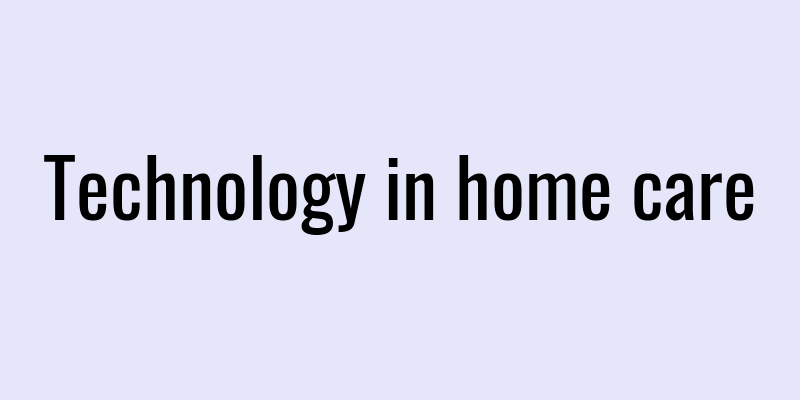Revolutionizing Care: The Ups and Downs of Technology in Home Care
Exploring the Benefits and Drawbacks of Integrating Technology into Home Care Services
In an age where technological advancements are reshaping various industries, home care is no exception. Integrating technology into home care services can enhance patient care, streamline processes, and improve the overall experience for both caregivers and patients. From remote monitoring tools to telehealth services, technology offers numerous solutions aimed at assisting individuals who prefer to receive care in the comfort of their homes. However, like any other innovation, the use of technology in home care comes with its own set of challenges and considerations that must be carefully weighed. This article dives into the myriad advantages and disadvantages of implementing technology in home care settings.
The ongoing global pandemic has further highlighted the importance of technology in home care, as many healthcare providers shifted to virtual consultations and remote monitoring to ensure patient safety. As we explore the landscape of technology in home care, it's essential to evaluate how these advancements facilitate better health outcomes while also acknowledging the potential drawbacks. Understanding both sides will enable caregivers, family members, and patients to make informed decisions about adopting technological solutions to enhance care at home.
Pros
The integration of technology into home care has transformed how caregivers provide services, significantly improving the quality of care that patients receive. With a plethora of innovative tools and solutions available, it's no wonder that technology is increasingly being recognized as a vital component of effective home care. From enhancing communication among caregivers and patients to ensuring timely interventions through monitoring devices, the advantages are compelling. Let's explore some of the most notable benefits of technology in home care that are reshaping the industry for the better.
Enhanced Monitoring for Better Health Outcomes
One of the most significant advantages of utilizing technology in home care is the ability to monitor patients' health conditions continuously. Devices such as smartwatches, remote blood pressure monitors, and glucose trackers provide real-time data that can be shared with healthcare professionals. This constant monitoring enables caregivers to detect any changes in a patient's health status promptly. For instance, if a patient's heart rate or blood sugar levels drop below an acceptable range, alerts can be sent immediately, facilitating timely medical interventions. Consequently, this proactive approach reduces the likelihood of complications and hospitalizations, resulting in better health outcomes.
Increased Independence and Comfort for Patients
Technology empowers patients to take control of their health while allowing them to maintain independence in their daily lives. With the help of user-friendly apps and devices, patients can manage their medications, schedule appointments, and communicate with healthcare providers without needing constant in-person assistance. This autonomy can significantly enhance a patient's emotional well-being, as they feel more self-sufficient and engaged in their care process. Moreover, receiving care at home, coupled with technology, often comes with increased comfort and a reduced sense of institutionalization, allowing patients to recover more naturally.
Streamlined Communication and Collaboration
One of the key benefits of implementing technology in home care is improved communication among all stakeholders involved. Various platforms allow caregivers, patients, and family members to stay connected in real-time. This means sharing information about a patient's progress, discussing care plans, and addressing any concerns becomes easier. Additionally, telehealth options enable healthcare providers to perform consultations without needing to travel, saving time for both caregivers and patients. Enhanced communication leads to better collaboration and cohesion in care delivery, ensuring that everyone involved is on the same page.
Customization to Individual Needs
Technology in home care allows for a high degree of customization tailored to individual patient needs. Care systems can be programmed to adapt to the specific health conditions and preferences of each patient. This personalized approach ensures that the care provided is relevant and effective, catering directly to the unique requirements of the individual, thereby enhancing the overall quality of care.
Enhanced Safety Features
Many technological solutions offer enhanced safety features that can be life-saving. For instance, smart home devices can detect falls, alert caregivers, or monitor environmental hazards such as gas leaks or smoke. These systems can provide peace of mind to families and caregivers, knowing that immediate action can be taken if a critical situation arises, thus improving the overall safety of the living environment.
Access to Telehealth Services
Technology facilitates access to telehealth services, allowing patients to consult healthcare professionals without the need for physical visits. This is especially beneficial for those with mobility issues or living in remote areas. Telehealth not only saves time and resources but also enables timely advice and interventions, ensuring that patients receive the necessary medical attention promptly.
Missing a pro?
Let us know which pro you are missing!
Cons
While the benefits of technology in home care are substantial, it’s vital to acknowledge the drawbacks that can arise from its integration. Transitioning to a technology-driven care model requires careful consideration of various factors, including, but not limited to, the cost of equipment, data security, and the potential for technology to inadvertently widen health disparities. As we delve into the disadvantages, we can better understand both the risks and challenges faced by caregivers and patients when incorporating technology into home care services.
High Costs and Accessibility Issues
One of the first challenges of adopting technology in home care is the often high costs associated with purchasing, maintaining, and upgrading equipment. Smart healthcare devices and software can be expensive, placing financial strain on patients and their families. For those who are already facing healthcare expenses, the additional costs can be daunting. Furthermore, not all patients have equal access to technology. Individuals living in rural areas or from lower-income backgrounds may struggle to acquire the necessary tools, hampering their ability to benefit from technological advancements in home care, thus creating health disparities.
Complicated User Interfaces and Learning Curves
Another significant disadvantage of implementing technology in home care is the complexity often associated with the devices and applications. Not all patients, especially senior citizens, are tech-savvy and may face difficulties navigating unfamiliar systems. As a result, some individuals may feel overwhelmed or frustrated, which can hinder their engagement in their care process. If patients cannot use the technology effectively, the intended benefits may not be fully realized. Ensuring proper training and tech support will be essential to overcoming this barrier.
Data Privacy and Security Concerns
The use of technology in home care brings about considerable concerns regarding the protection of personal health information. With devices connected to the internet and data shared across various platforms, the risk of data breaches and cyberattacks looms large. Patients may be rightly worried about how their sensitive information is used, stored, and who has access to it. Failing to address these privacy concerns can undermine the trust between patients and healthcare providers, making it challenging to implement technology effectively and safely.
Over-reliance on Technology
One of the drawbacks of technology in home care is the potential for over-reliance on devices and systems. Caregivers may become overly dependent on technological solutions, which can lead to a decline in personal interactions and attentiveness to patients’ needs. This detachment can hinder the caregiver-patient relationship and may overlook the importance of human touch and empathy in care.
Technical Malfunctions and Reliability Issues
While technology offers many advantages, it is not immune to technical malfunctions. Systems can fail, leading to potential gaps in care when they are most needed. This could include equipment breaking down or software glitches that disrupt monitoring or communication. Such reliability issues can pose risks to patient safety and wellbeing, making it critical to have contingency plans in place.
Risk of Isolation for Patients
The use of technology can sometimes contribute to social isolation among patients. With increased reliance on virtual interactions and remote monitoring, there might be fewer opportunities for in-person socialization and connection with family and friends. This isolation can have negative emotional effects on patients, emphasizing the importance of balancing technology use with maintaining social relationships and face-to-face contact.
Missing a con?
Let us know which con you are missing!
Conclusion
In conclusion, while technology in home care presents numerous benefits, including enhanced monitoring, increased patient independence, and improved communication, it is essential to recognize the accompanying challenges. High costs, user-friendly limitations, and privacy concerns underscore the need for a balanced approach to integrating technology into home care services. By carefully evaluating these factors and ensuring equitable access, caregivers and patients can harness the power of technology to improve care delivery without compromising safety and well-being. This exploration of both the advantages and disadvantages equips stakeholders with valuable insights they can utilize to navigate the evolving landscape of technology in home care.
What do you think?
Do you think the pros outweigh the cons?





